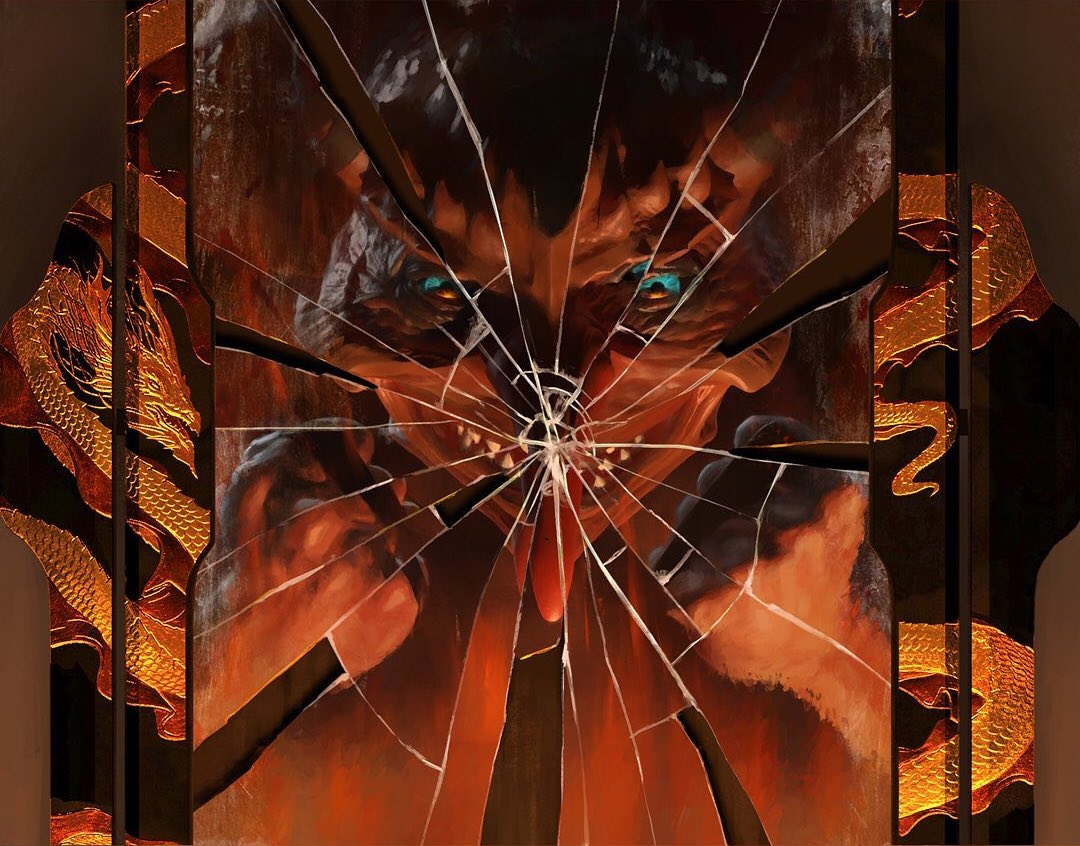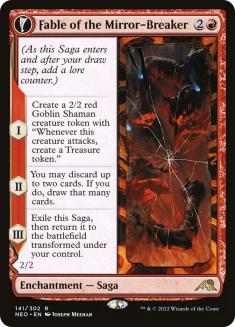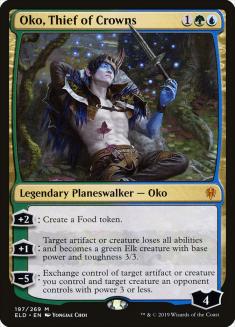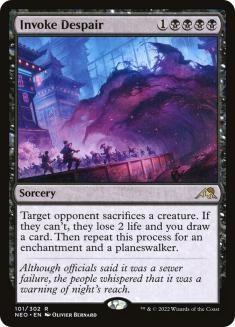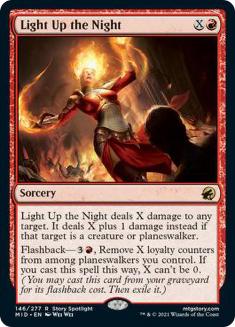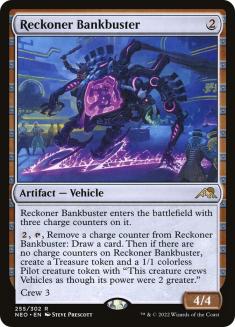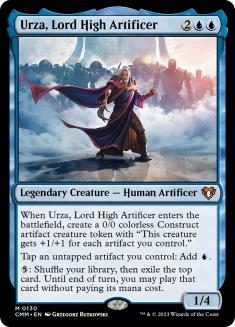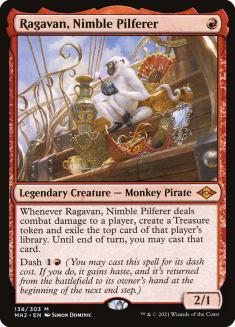Pro Tour March of the Machine’s outcome was striking yet unsurprising. The reigning Magic World Champion winning a Pro Tour after just making the Top 8 of the last one is an amazing, improbable feat that somehow just feels like another day at the office for Nathan Steuer, who is putting together one of the greatest runs of all time.
My weekend was less triumphant. My preparation and play were both poor and my results reflected that. After losing my last round to miss requalifying for the next Pro Tour in Barcelona and locking in a perfectly average 8-8 finish, I was in two minds – I wanted to be anywhere else doing anything else, and I also wanted to be shuffling up for Round 1 of my next tournament.
For the audience at large, there was only one story to follow.
The Fable of Standard
The Rakdos core of Bloodtithe Harvester and Fable of the Mirror-Breaker put up similar numbers to Oko, Thief of Crowns in its record-breaking dominance at Pro Tour Richmond. Wizards of the Coast (WotC) swiftly removed Oko from power after that debacle, and I expect Fable to meet a similar fate now that it threatens to stick around for another year. When Fable was due to rotate out in just a few months, it would’ve been easy to tough it out rather than admit some kind of failure by banning it; that option is off the table now.
This wasn’t hard to see coming. Fable of the Mirror-Breaker took a surprisingly long time to catch on – its debut at the Neon Dynasty Championship was more accidental than anything else – but it quickly established itself as a pillar of every format it was legal in. When Standard shrank from eight sets to five sets for the last time, Fable was the default best card in this smaller format. The Meathook Massacre was banned in an understandable but misdirected attempt to cut black midrange down to size, but this left Fable legal as the real culprit, and further removed one of the few cards that could answer most of a Fable at a profit and keep up with it on the draw. Since then, some style of Fable deck has been the best strategy in Standard at almost all points.
Within that, there was a lot of variety – you could land anywhere on the spectrum from midrange to combo, and that in turn prompted further card and colour choices – but Fable was the glue holding it together. If Fable goes, the lists with more personality will suffer the most – Fable is the discard outlet and route to hard-casting your threats that Reanimator needed to function, for example – but the danger of its appeal is that it does just enough for everyone. Do you care about artifacts or enchantments? Fable gets you both. Do you want to create tokens? Fable does that and promises to keep doing it. If you’re trying to do something cool, Fable will tie up the loose ends and let you do that. If you just want to play midrange Magic, Fable is the best card for that too.
The best Fable deck was also the best deck overall – Rakdos Midrange.
It’s very tempting to avoid the midrange slugfests by going over the top, and Standard offers many ways to do that. When The Cruelty of Gix brings back Atraxa, Grand Unifier or your Breach the Multiverse hits their best threat and your Etali, Primal Conqueror, any marginal advantage accrued in the mid-game is wiped out completely.
Any plan like this carries its own risk – getting to seven mana for this big flourish isn’t trivial, and each of these end-games encourages you to have additional expensive cards in your deck. The big realization behind the Pro Tour-winning list is that you don’t have to go far beyond the cards you wanted to play anyway. Chandra, Hope’s Beacon is a fantastic finisher in its own right and merely asks for a powerful instant or sorcery to pair with it. You can copy your Big Score or the Breach the Multiverse it’s jumping to – but do you need to? If the first Invoke Despair is usually painful, the second is always backbreaking – and the first one is much easier to cast in the ‘normal’ games.
Light Up the Night links up with Chandra for a specific, fiery finish. If you have the six mana to cast Chandra, adding its mana to that next turn lets you light up the opponent for a high value of X and double that with Chandra. Alternatively, if Light Up the Night is in your graveyard – from casting it manually or ditching it to Fable or a Blood token – you can cast Chandra, use the +2 ability for mana, and flashback, draining all the counters from Chandra for fourteen damage out of nowhere.
Fourteen is much less than twenty, but this take on Rakdos Midrange is excellent at applying pressure – Austin Bursavich named his copy ‘Rakdos Burn’ for a reason. Sheoldred, the Apocalypse triggers; life loss from Invoke Despair; and hits from your cheap threats – including Reckoner Bankbuster, a much better attacker than the Mazemind Tomes of Standard past! – whittle down the opponent’s life total easily. Again, Light Up the Night fits neatly into the normal Rakdos Midrange gameplan – you’ll gladly use it early to trade with the opponent’s Bloodtithe Harvester or Fable token – while opening up this whole new dimension to the deck.
Ultimately, the strongest players showed up with a smart take on the best deck and dominated accordingly.
The Future of Standard
The Standard we saw this weekend was a ‘big’ Standard – and it’s also the smallest Standard we will see for quite some time.
The WotC announcement of the move to a three-year Standard is a seismic change for a format that was stuck in a rut. The explicit goal of reviving tabletop Standard makes sense and is a big prize. People working on other games looked at the success of Standard with a jealous bewilderment – getting players to keep buying in to a rotating format is no easy feat. Standard also acted as the ideal on-ramp for competitive play – you could start attending local events with a cheap Standard deck, become a more enfranchised player over time, and work your way into larger and more expensive formats like Modern.
Several factors will make this tricky:
COVID
Even a small format like Standard can be daunting to buy into from scratch, but, as long as you had played in the last year or so, you were sure to have a foothold into the Standard card pool. A rotating format still needs some element of continuity to let people stay on the ride.
The pandemic ruined all that. Even if Standard had been flourishing in the early days of 2020, the hard reset forced upon it by the pandemic would have hobbled it as paper play slowly returned many months later. With no immediate reason to buy into Standard, why not take steps towards an established, non-rotating format instead?
Right now that road runs the other way – Rakdos Midrange in Pioneer is mostly a Standard deck with some extra bells and whistles, and if you bought into that for your Pioneer RCQ season, you have the best deck in Standard already. That leap won’t always be so easy.
Precedent
Of course, Standard wasn’t flourishing going into 2020 – it was already a shadow of its former self, and it was impossible to find a Standard FNM in most of the world. The carousel of bans that started with Kaladesh ruined confidence in the management of the format and any investment you might make in it. The last major pre-pandemic release reminded us why – Throne of Eldraine Standard required several waves of bans before becoming healthy and stable (though even then, each of the best decks would have a key card banned within a year).
That’s why the context of this Pro Tour matters. When you have another deck throttling a format and the banning of a key card is a question of when, not if, why would anyone believe that things have changed?
Arena
Another problem here is a good one to have – the popularity of MTG Arena. Players now have a convenient, on-demand way to play Standard at home in their pyjamas. They don’t need to build and use a paper Standard deck to scratch that itch. However, the structure of the Arena economy means that unlocking that convenience requires a hefty up-front investment of time, money, or both. Asking players to tear open their wallet again to build an offline Standard collection is a tough sell.
Competition
There are also a lot more ways to spend your time and money on Magic these days. The growth of Commander is great news for the casual gamer who might have been roped into the occasional FNM before – you can go to your LGS and know you can find a Commander game without any concern about whether your Standard FNM will actually fire.
There are more products released per year than ever, but only a handful of these are relevant if you care about Standard. The idea of buying some packs and ending up with the basis for a Standard deck feels antiquated – if it ever made sense.
All this and more points to this Standard revival being an ambitious goal. Notably, most of these problems have little or nothing to do with the actual lifespan of a Standard card – there are structural issues that remain after this announcement. Perhaps the main takeaway is that they are explicitly committed to this goal now and are willing to act with it in mind.
One of Standard’s rivals offers an analogy here. The first Modern Horizons was a bomb dropped on a mostly popular and stable format; Modern Horizons 2 came at a time when the format’s institutional memory had been erased, and it was in a state of stagnation. Modern in 2021 needed that big upheaval to remain compelling at all, especially as tabletop Modern became a thing again.
There’s no guarantee that this move will work, but there’s no existing base of Standard play put at risk here. It won’t bring back paper Standard by itself, but it’s a bold step in the right direction. Selfishly, as a fan of the four-year Extended format that was part of competitive play a decade ago, I welcome this news, but I think it’s a good day for fans of Standard or competitive Magic more broadly too.

